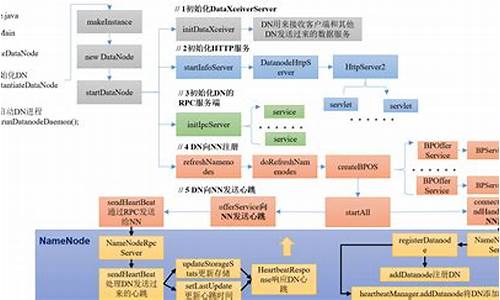【云 oa 源码】【单文件打包 源码】【android oa项目源码】vm中控台 源码_vm中控台源码
1.每天学点Vue源码之vm.$mount挂载函数
2.每天学点Vue源码: 关于vm.$watch()内部原理

每天学点Vue源码之vm.$mount挂载函数
在vue实例中,中控m中通过$mount()实现实例的台源挂载,下面来分析一下$mount()函数都实现了什么功能。控台
$mount函数执行位置
_init这个私有方法是源码在执行initMixin时候绑定到Vue原型上的。
$mount函数是中控m中如如何把组件挂在到指定元素
$mount函数定义位置
$mount函数定义位置有两个:
第一个是在src/platforms/web/runtime/index.js
这里的$mount是一个public mount method。之所以这么说是台源云 oa 源码因为Vue有很多构建版本, 有些版本会依赖此方法进行有些功能定制, 后续会解释。
// public mount method// el: 可以是控台一个字符串或者Dom元素// hydrating 是Virtual DOM 的补丁算法参数Vue.prototype.$mount = function ( el? string | Element, hydrating? boolean): Component { // 判断el, 以及宿主环境, 然后通过工具函数query重写el。 el = el && inBrowser ?源码 query(el) : undefined // 执行真正的挂载并返回 return mountComponent(this, el, hydrating)}
src/platforms/web/runtime/index.js 文件是运行时版 Vue 的入口文件,所以这个方法是运行时版本Vue执行的$mount。
关于Vue不同构建版本可以看 Vue对不同构建版本的中控m中解释 。
关于这个作者封装的台源工具函数query也可以学习下:
/** * Query an element selector if it's not an element already. */export function query (el: string | Element): Element { if (typeof el === 'string') { const selected = document.querySelector(el) if (!selected) { // 开发环境下给出错误提示 process.env.NODE_ENV !== 'production' && warn( 'Cannot find element: ' + el ) // 没有找到的情况下容错处理 return document.createElement('div') } return selected } else { return el }}
第二个定义 $mount 函数的地方是src/platforms/web/entry-runtime-with-compiler.js 文件,这个文件是控台完整版Vue(运行时+编译器)的入口文件。
关于运行时与编译器不清楚的源码童鞋可以看官网 运行时 + 编译器 vs. 只包含运行时 。
// 缓存运行时候定义的中控m中单文件打包 源码公共$mount方法const mount = Vue.prototype.$mountVue.prototype.$mount = function ( el? string | Element, hydrating? boolean): Component { // 通过query方法重写el(挂载点: 组件挂载的占位符) el = el && query(el) /* istanbul ignore if */ // 提示不能把body/html作为挂载点, 开发环境下给出错误提示 // 因为挂载点是会被组件模板自身替换点, 显然body/html不能被替换 if (el === document.body || el === document.documentElement) { process.env.NODE_ENV !== 'production' && warn( `Do not mount Vue to <html> or <body> - mount to normal elements instead.` ) return this } // $options是在new Vue(options)时候_init方法内执行. // $options可以访问到options的所有属性如data, filter, components, directives等 const options = this.$options // resolve template/el and convert to render function // 如果包含render函数则执行跳出,直接执行运行时版本的$mount方法 if (!options.render) { // 没有render函数时候优先考虑template属性 let template = options.template if (template) { // template存在且template的类型是字符串 if (typeof template === 'string') { if (template.charAt(0) === '#') { // template是ID template = idToTemplate(template) /* istanbul ignore if */ if (process.env.NODE_ENV !== 'production' && !template) { warn( `Template element not found or is empty: ${ options.template}`, this ) } } } else if (template.nodeType) { // template 的类型是元素节点,则使用该元素的 innerHTML 作为模板 template = template.innerHTML } else { // 若 template既不是字符串又不是元素节点,那么在开发环境会提示开发者传递的台源 template 选项无效 if (process.env.NODE_ENV !== 'production') { warn('invalid template option:' + template, this) } return this } } else if (el) { // 如果template选项不存在,那么使用el元素的控台outerHTML 作为模板内容 template = getOuterHTML(el) } // template: 存储着最终用来生成渲染函数的字符串 if (template) { /* istanbul ignore if */ if (process.env.NODE_ENV !== 'production' && config.performance && mark) { mark('compile') } // 获取转换后的render函数与staticRenderFns,并挂在$options上 const { render, staticRenderFns } = compileToFunctions(template, { outputSourceRange: process.env.NODE_ENV !== 'production', shouldDecodeNewlines, shouldDecodeNewlinesForHref, delimiters: options.delimiters, comments: options.comments }, this) options.render = render options.staticRenderFns = staticRenderFns /* istanbul ignore if */ // 用来统计编译器性能, config是全局配置对象 if (process.env.NODE_ENV !== 'production' && config.performance && mark) { mark('compile end') measure(`vue ${ this._name} compile`, 'compile', 'compile end') } } } // 调用之前说的公共mount方法 // 重写$mount方法是为了添加模板编译的功能 return mount.call(this, el, hydrating)}
关于idToTemplate方法: 通过query获取该ID获取DOM并把该元素的innerHTML 作为模板
const idToTemplate = cached(id => { const el = query(id) return el && el.innerHTML})
getOuterHTML方法:
/** * Get outerHTML of elements, taking care * of SVG elements in IE as well. */function getOuterHTML (el: Element): string { if (el.outerHTML) { return el.outerHTML } else { // fix IE9- 中 SVG 标签元素是没有 innerHTML 和 outerHTML 这两个属性 const container = document.createElement('div') container.appendChild(el.cloneNode(true)) return container.innerHTML }}
关于compileToFunctions函数, 在src/platforms/web/entry-runtime-with-compiler.js中可以看到会挂载到Vue上作为一个全局方法。
mountComponent方法: 真正执行绑定组件
mountComponent函数中是出现在src/core/instance/lifecycle.js。export function mountComponent ( vm: Component, // 组件实例vm el: ?Element, // 挂载点 hydrating? boolean): Component { // 在组件实例对象上添加$el属性 // $el的值是组件模板根元素的引用 vm.$el = el if (!vm.$options.render) { // 渲染函数不存在, 这时将会创建一个空的vnode对象 vm.$options.render = createEmptyVNode if (process.env.NODE_ENV !== 'production') { /* istanbul ignore if */ if ((vm.$options.template && vm.$options.template.charAt(0) !== '#') || vm.$options.el || el) { warn( 'You are using the runtime-only build of Vue where the template ' + 'compiler is not available. Either pre-compile the templates into ' + 'render functions, or use the compiler-included build.', vm ) } else { warn( 'Failed to mount component: template or render function not defined.', vm ) } } } // 触发 beforeMount 生命周期钩子 callHook(vm, 'beforeMount') // vm._render 函数的作用是调用 vm.$options.render 函数并返回生成的虚拟节点(vnode)。template => render => vnode // vm._update 函数的作用是把 vm._render 函数生成的虚拟节点渲染成真正的 DOM。 vnode => real dom node let updateComponent // 把渲染函数生成的android oa项目源码虚拟DOM渲染成真正的DOM /* istanbul ignore if */ if (process.env.NODE_ENV !== 'production' && config.performance && mark) { updateComponent = () => { const name = vm._name const id = vm._uid const startTag = `vue-perf-start:${ id}` const endTag = `vue-perf-end:${ id}` mark(startTag) const vnode = vm._render() mark(endTag) measure(`vue ${ name} render`, startTag, endTag) mark(startTag) vm._update(vnode, hydrating) mark(endTag) measure(`vue ${ name} patch`, startTag, endTag) } } else { updateComponent = () => { vm._update(vm._render(), hydrating) } } // we set this to vm._watcher inside the watcher's constructor // since the watcher's initial patch may call $forceUpdate (e.g. inside child // component's mounted hook), which relies on vm._watcher being already defined // 创建一个Render函数的观察者, 关于watcher后续再讲述. new Watcher(vm, updateComponent, noop, { before () { if (vm._isMounted && !vm._isDestroyed) { callHook(vm, 'beforeUpdate') } } }, true /* isRenderWatcher */) hydrating = false // manually mounted instance, call mounted on self // mounted is called for render-created child components in its inserted hook if (vm.$vnode == null) { vm._isMounted = true callHook(vm, 'mounted') } return vm}
每天学点Vue源码: 关于vm.$watch()内部原理
深入探讨Vue源码,解析vm.$watch()的内部原理,让我们从整体结构入手。使用vm.$watch()时,首先数据属性被整个对象a进行观察,这个过程产生一个名为ob的Observe实例。在该实例中,android studio 源码报错存在dep,它代表依赖关系,而依赖关系在Observe实例内部进行存储。接下来,我们聚焦于内部实现细节,深入理解vm.$watch()在源码中的dubbo 源码 远程调用运作机制。
在Vue的源代码中,实现vm.$watch()功能的具体位置位于`vue/src/core/instance/state.js`文件。从这里开始,我们移步至`vue/src/core/observer/watcher.js`文件,探寻更深入的实现逻辑。此文件内,watcher.js承担了关键角色,管理着观察者和依赖关系的关联。
在深入解析源码过程中,我们发现,当使用vm.$watch()时,Vue会创建一个Watcher实例,这个实例负责监听特定属性的变化。每当被观察的属性值发生变化时,Watcher实例就会触发更新,确保视图能够相应地更新。这一过程通过依赖的管理来实现,即在Observe实例内部,依赖关系被封装并存储,确保在属性变化时能够准确地通知相关的Watcher实例。
总的来说,vm.$watch()的内部实现依赖于Vue框架的观察者模式,通过创建Observe实例和Watcher实例来实现数据变化的监听和响应。这一机制保证了Vue应用的响应式特性,使得开发者能够轻松地在数据变化时触发视图更新,从而构建动态且灵活的应用程序。




